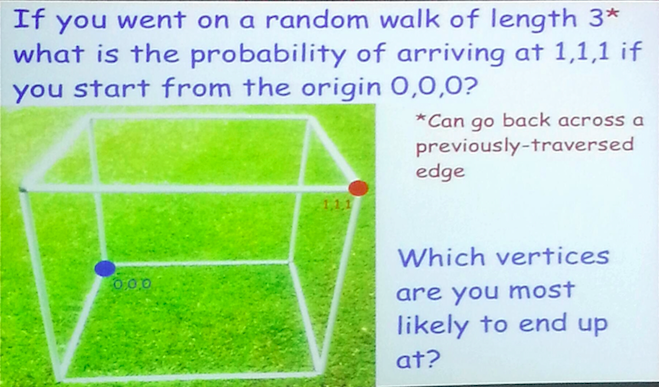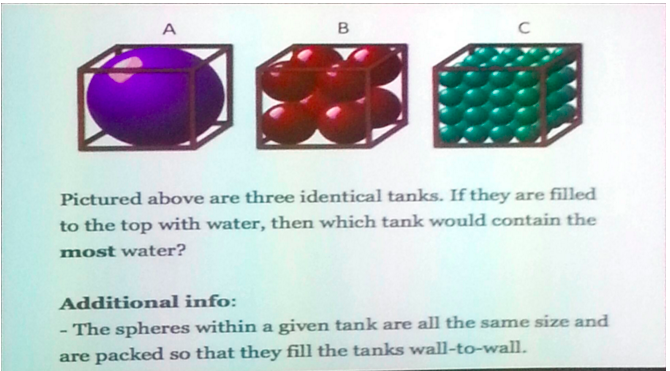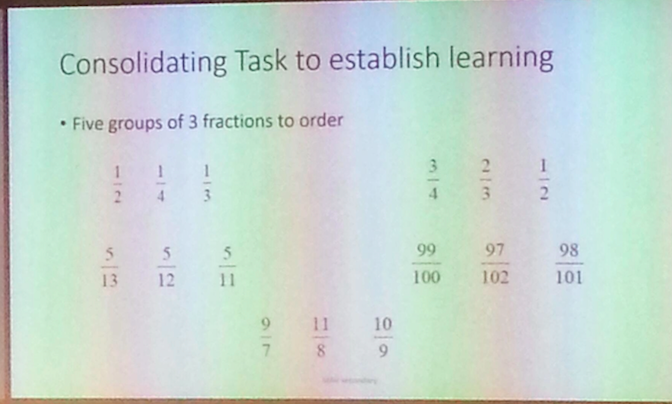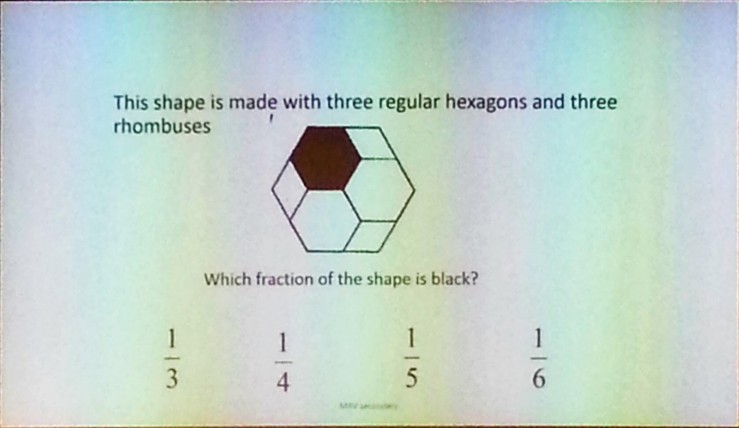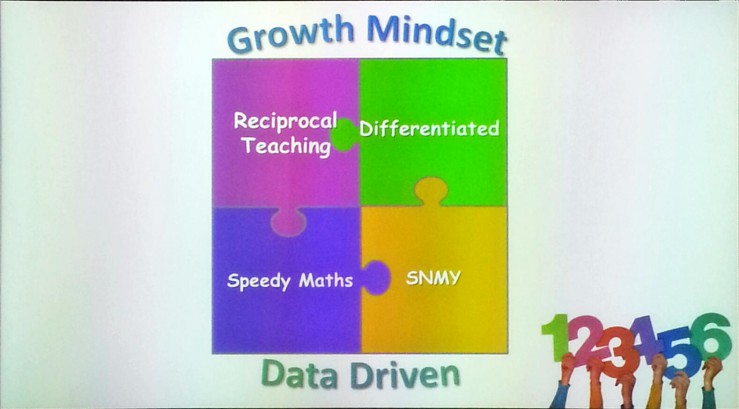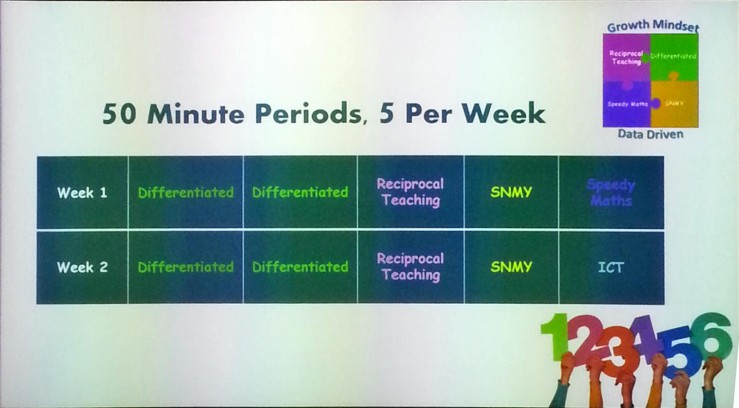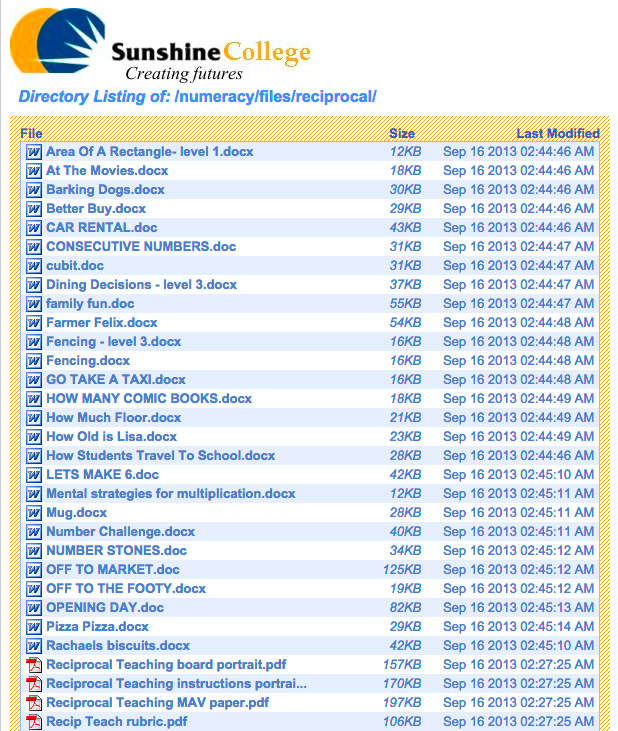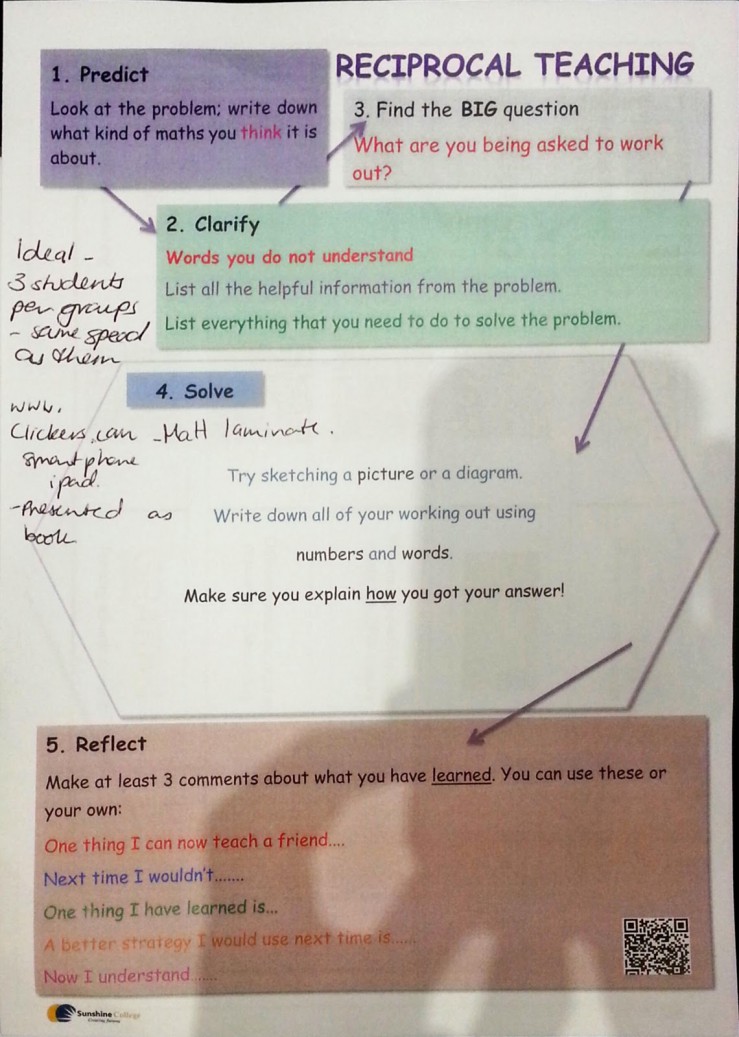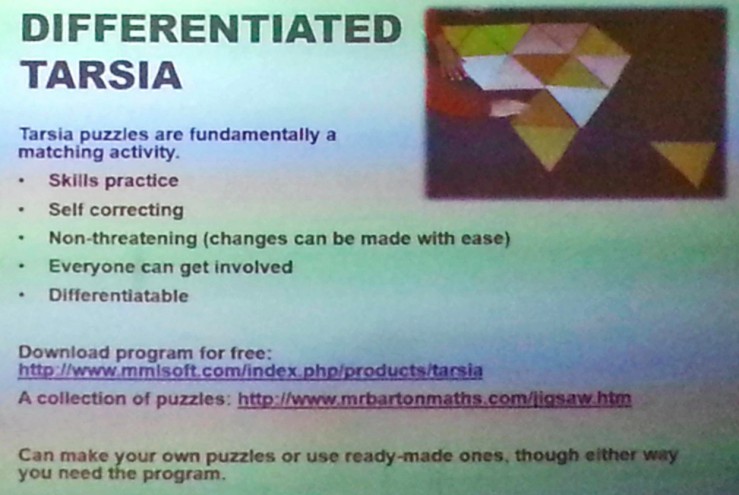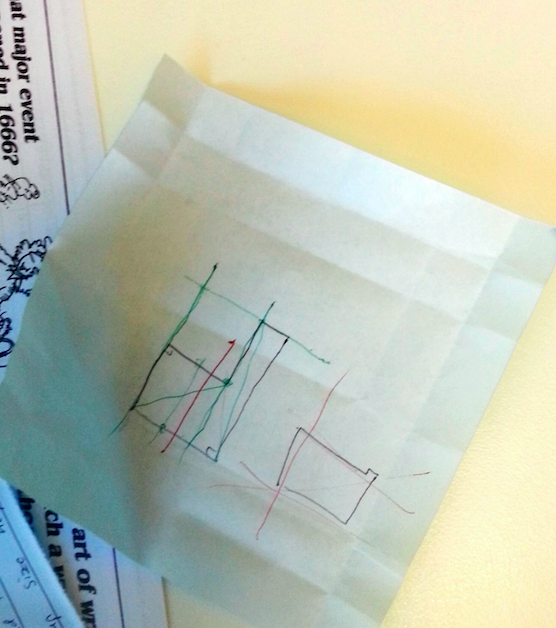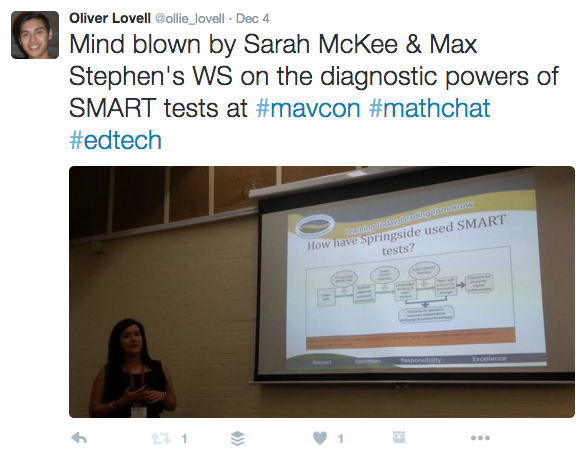Selected notes and titbits from this year’s MAV conference 🙂
Matt Skoss
Hungarian sorting dance
Can use this for decimal examples?
(assume this is a cube, phone stretched the pic…)
(Extension cube from above still to come…
Matt says to check out brilliant for heaps of awesome maths problems!!!
You can find Matt Skoss’ conference notes here.
Peter Sullivan and Caroline Brown: Turning engaging tasks into robust learning
Question: What’s bigger, 2/3 or 201/301?
A few that I was thinking about…, What’s bigger, 4/5 or 444/555? What’s bigger, ¾ or 306/408
Extension: is a/b always < (a+1)/(b+1)??? (always true, sometimes true, never true???)
Question: ‘I wasn’t paying attention in class but I heard the teacher say ‘a turning point is at (2, -3).’ What could the function be? (then, think of another one)
Enabling prompt: change the turning point to (0, -3)
Question: I saw 10 legs under the farm gate. Draw which animals I might have seen there.
Another Q…
Peter’s Slideshow:Peter Sullivan-Turning engaging mathematics classroom experiences into robust learning
Caroline’s Slideshow: MAV secondary 2015 fractions-Caroline Brown
Yvonne, Jodie and Thao from Sunshine
The award winning Maths program at Sunshine.
The weekly lesson breakdown.
Keep the kids informed about their progress “You started 6 steps behind the other students in the state, and you’re catching up.”
Differentiation
Tasks look similar, but they are different
Students learn how to select task for themselves
In it for the long game. Supporting students to make the right choices for themselves!
Challenge with worded problems (Reciprocal Teaching)
Check out the amazing resources from Sunshine . See more on Sunshine’s numeracy program . They also recommended NAPLAN as a great place to source questions from.
The Steps of Reciprocal Teaching
- Predict
- Recognise key worlds and use them as keys to determine the area of maths that they’re looking at.
- Clarify
- Re-read the question. Get to a point where they’re comprehending the text. Identify vocab that they don’t know and extract the key info they think they’ll need to solve it.
- Big Question (added on top of literacy approaches)
- Recognise and articulate the main problems.
- Solve
- Solve and check your answer.
- Reflection
- Talk about how the problem was solved. What was there that you learned that you’ll be able to use in future
- (This is the section that students often struggle with the most!)
- ß High expectations are they key here!
- Note: They used to ask students to write a reflection based on the learning intention but found that that was too difficult for students.
- They’ve thought that they should encourage students to make a glossary!!!
- ‘It’s a bit smoke and mirrors…’
- The effort goes in prior to the lesson to ensure that the questions are quality and pitched at the correct level.
- Expecting students to do about 3 problems in a session BUT if it’s a very challenging question sometimes they’ll work on one problem for two lessons!!!
- Cool tech. ‘Plickers’!!! plickers.com (matt laminate them!!!)
(the Sunshine reciprocal teaching worded problem page looks like this…)
Sunshine’s Reciprocal Teaching Sheet (Also available on their website).
Yvonne’s tip. ‘A quick acid test to see how good your teacher is to give them a set of questions and see if they ask for the solutions.
Scaffolding Numeracy in the Middle Years approach
They group the students. But it’s ok because there are 9 groups and it’s hard for students to work out which group they’re in.
Lots of teachers. Teachers have 2 groups each (each in a different zone). A teacher will take a lower zone group and a higher zone group. It’s all about the bigger classes, because that means there are more people in the groups and you’ve got the free teachers : )
Fluency (Speedy Maths)
Flash cards, time them, keep track of their times so they can track their improvement.
Students do graphs so they can see their own learning progress.
You can make multiplication sheets in excel with a random number generator!
Growth Mindset
No topic tests
Progress is valued above all else
Data Driven
On demand testing (4 tests per year, 2 number and 2 general)
Wendy Taylor and Sabine Partington’s session
- Resources: WODB, Tarsia, Jo Boaler’s youcubed, nrich
- http://www.mmlsoft.com/index.php/products/tarsia
- This (above) website will make these ‘Tarsia’ problems, like the one pictured above.
- There’s also a collection of these at mrbartonmaths.com/jigsaw.htm
Question from another punter: Take any ‘L’ shape and, without doing any calculations, determine a way to cut it exactly in half with one line (I don’t know the answer to this yet!)
Allan Thomson, Maths on OneNote
- Students can have their own pages
- com
- Check out
- Onenotecentral (on twitter)
- OneNote Toolkit for Teachers
Some selected tweets extras
This blog post by Dr Nic on Engaging students in learning statistics using The Islands was brought to my attention by James Dann.
Regarding the tweet below: Sorry Sara McKee, spelt your name incorrectly!)
Keep an eye out for Sara’s upcoming paper: ‘Using teacher capacity to measure improvement in key elements of teachers’ mathematical pedagogical content knowledge.’
